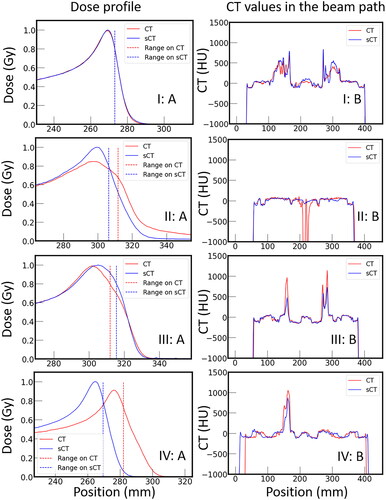Figures & data
Figure 1. Example of MRI (a), CT (B), and sCT (C) for a corresponding slice, along with associated random model error (i.e., the standard deviation of the 50 sub-sCTs; D) and the systematic error of sCT (i.e., the difference between the CT and the sCT; E).
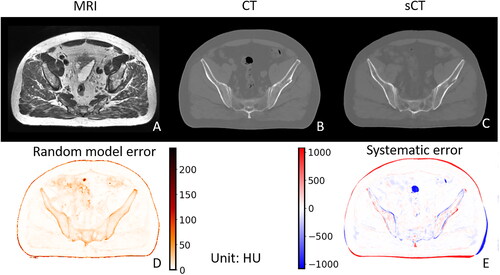
Figure 2. Histogram of the (A) random model and (B) systematic error for sCT in the test dataset Separated according to area defined by the CT numbers of the real CT. Relative histograms are shown as the volumes of the considered areas differ substantially. For random model error, data with values < 10 HU are omitted to highlight the behaviour at large errors.
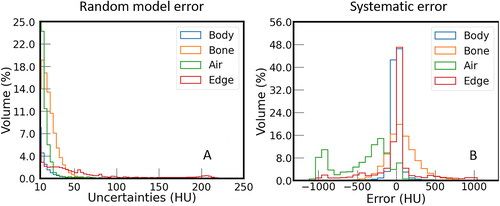
Table 1. The mean absolute error (MAE) and mean error (ME) between the sCT and CT Evaluated separately for the training and test dataset in different areas.
Figure 3. Beam’s eye view (BEV) of the (A) random model error and (B) systematic error of proton range of 121 individually simulated lateral 200 MeV proton beams on a 10 × 10 cm2 beam grid oriented in anterior-posterior (AP) and cranial-caudal direction (CC) for one patient in the test dataset.
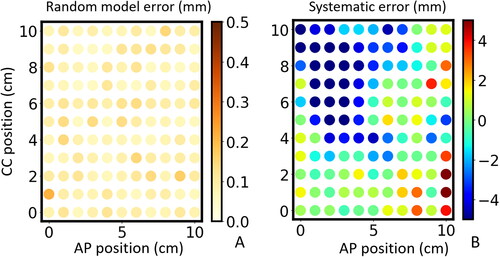
Figure 4. Histogram of (A) absolute and (B) relative values of systematic proton range errors of all beams simulated on the training and test dataset. The number of proton beams is normalised.
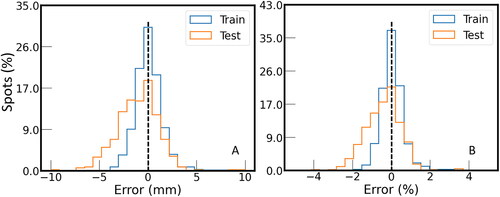
Data availability statement
The data that support the findings of this study are available from [Citation38]. Restrictions apply to the availability of these data. Data are available from https://zenodo.org/record/583096 with the permission of the authors.

